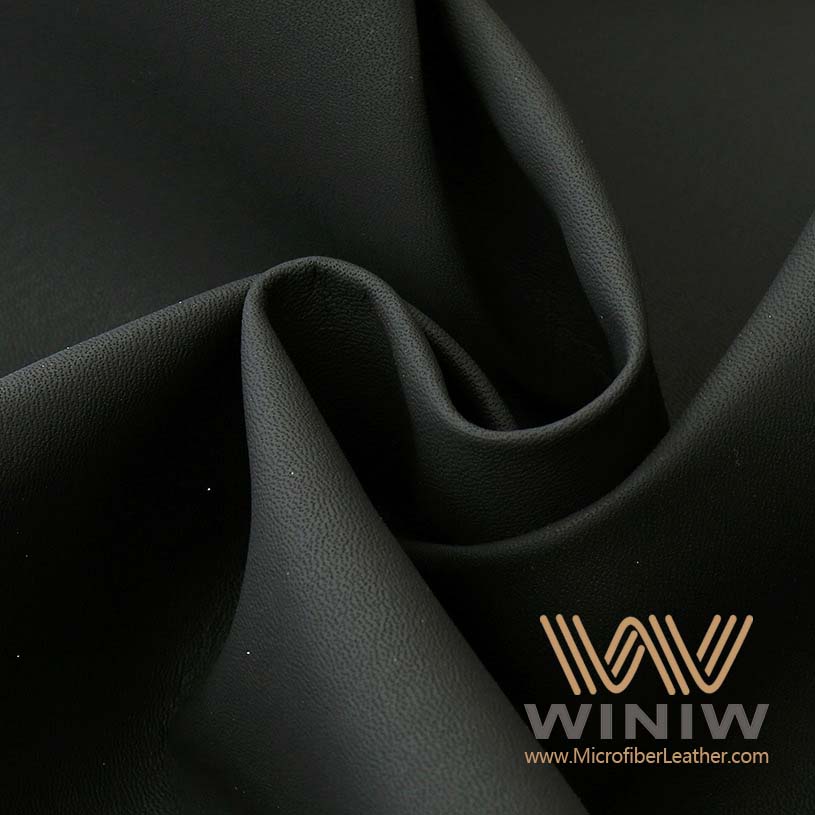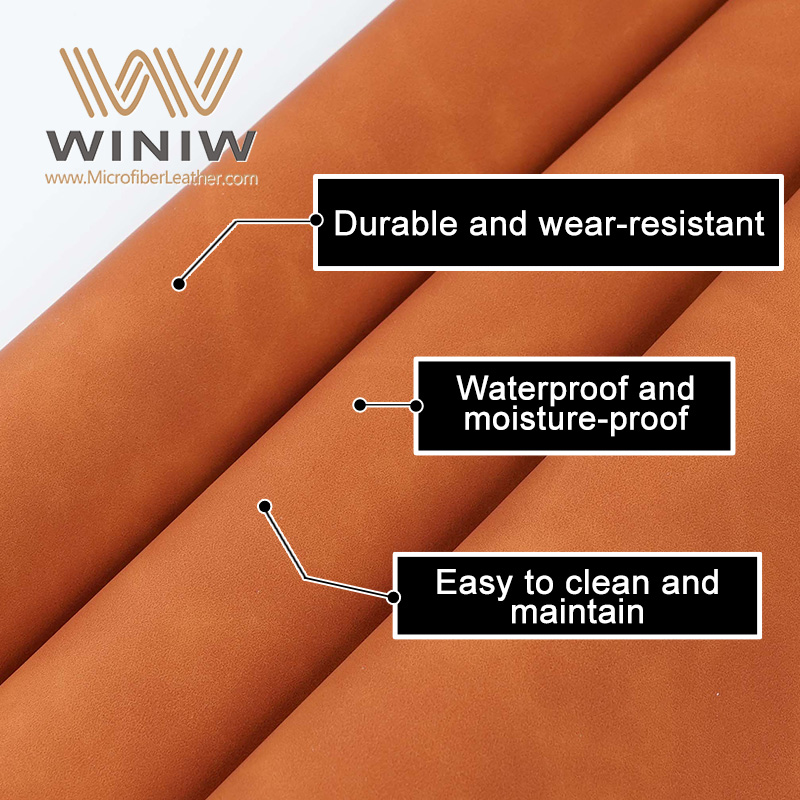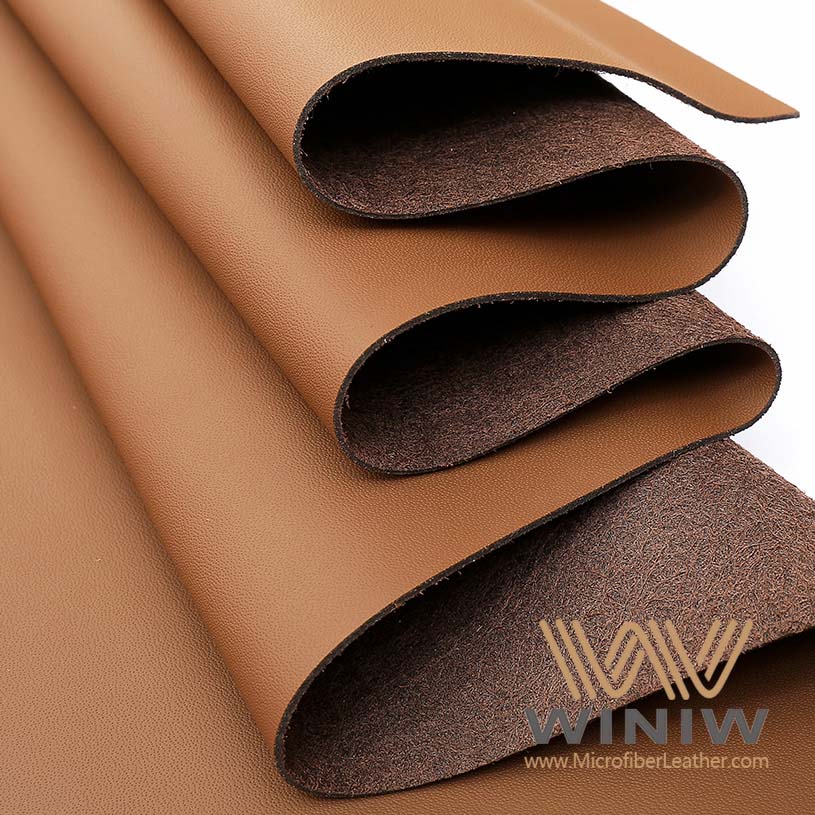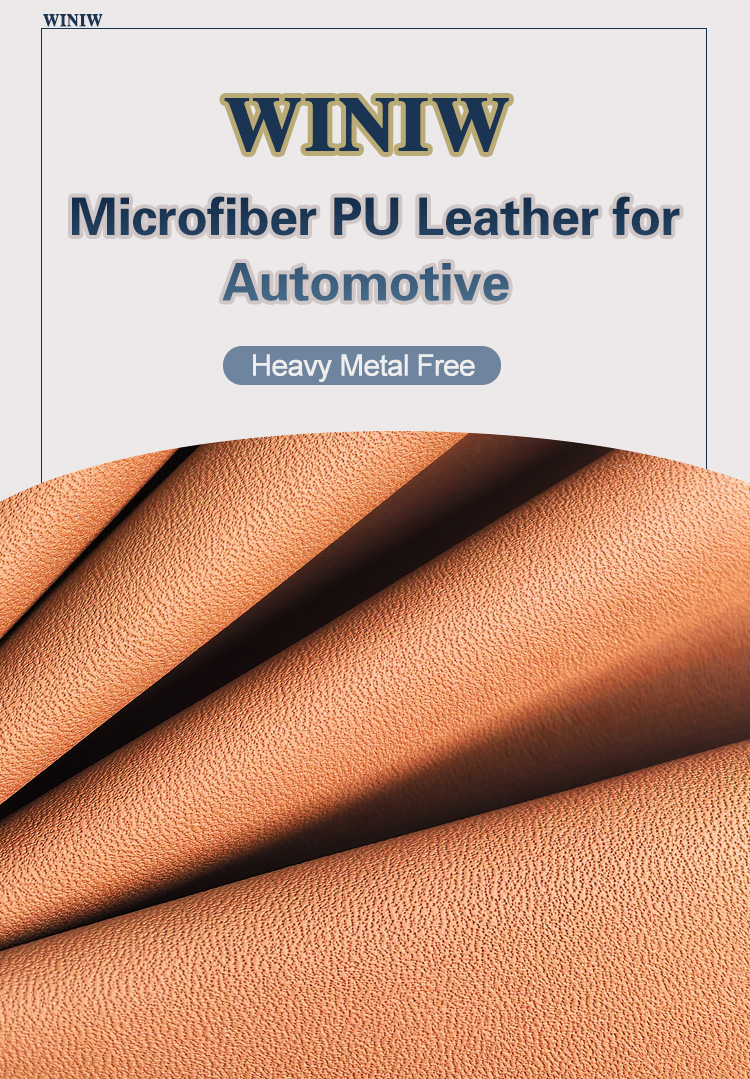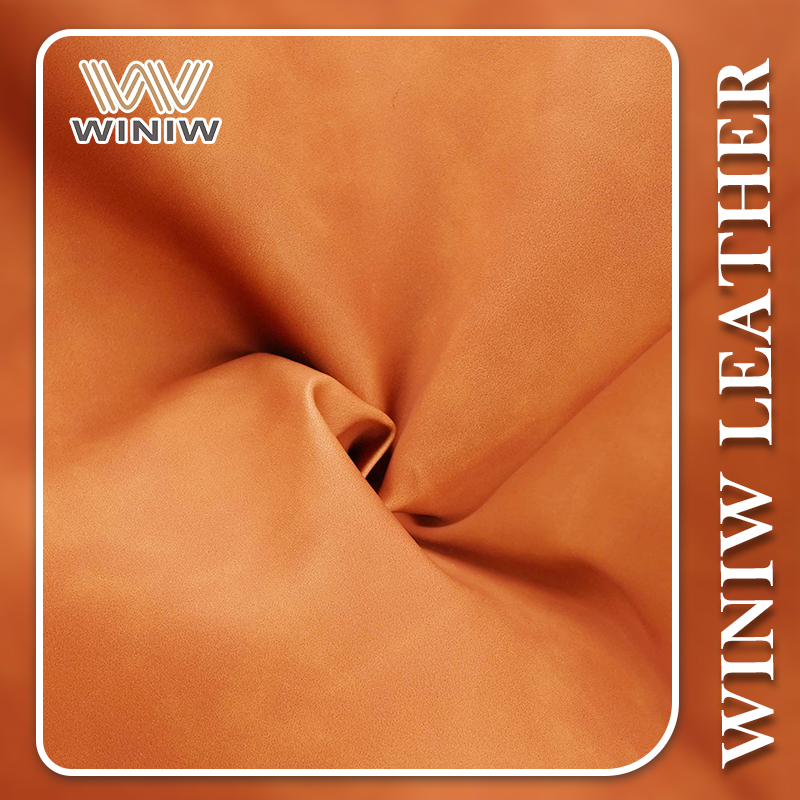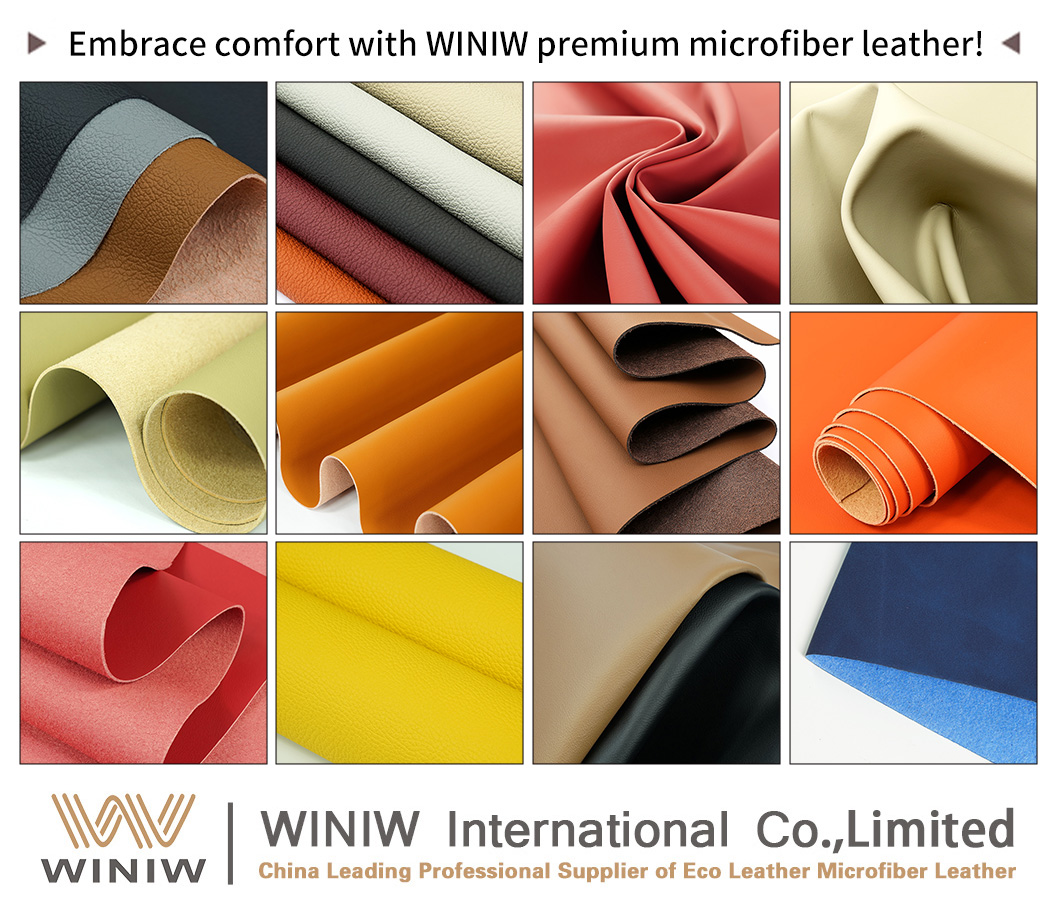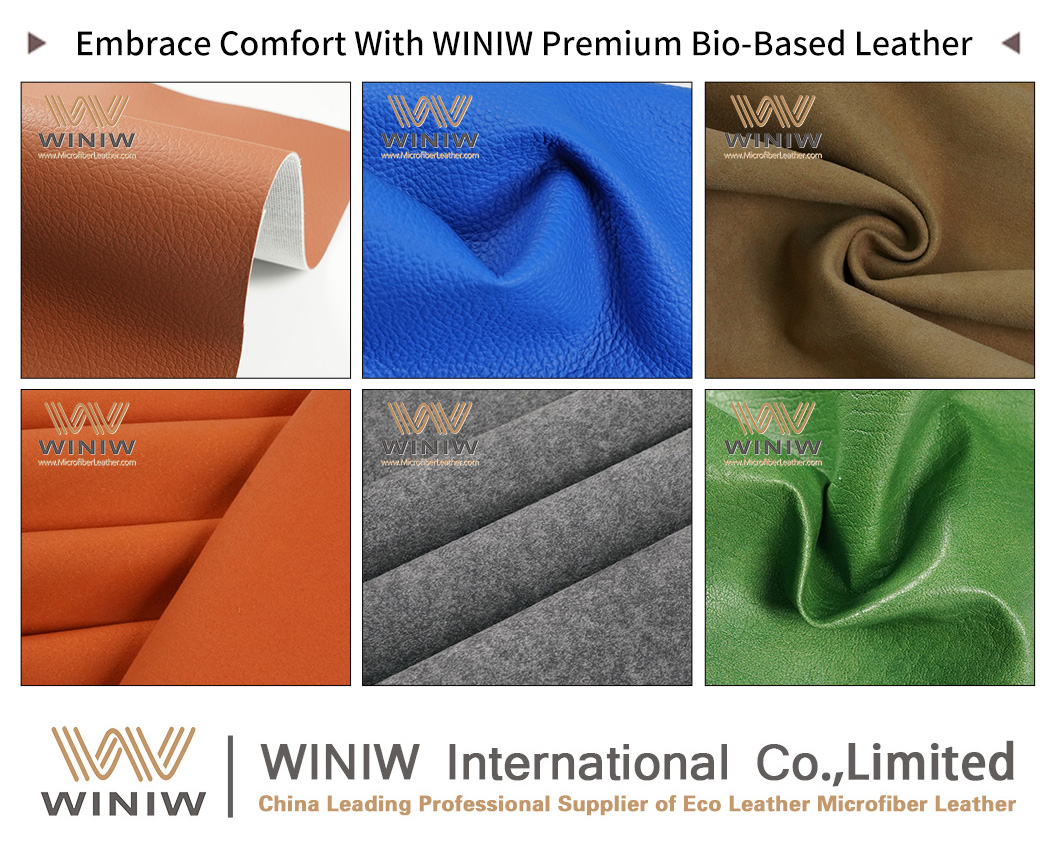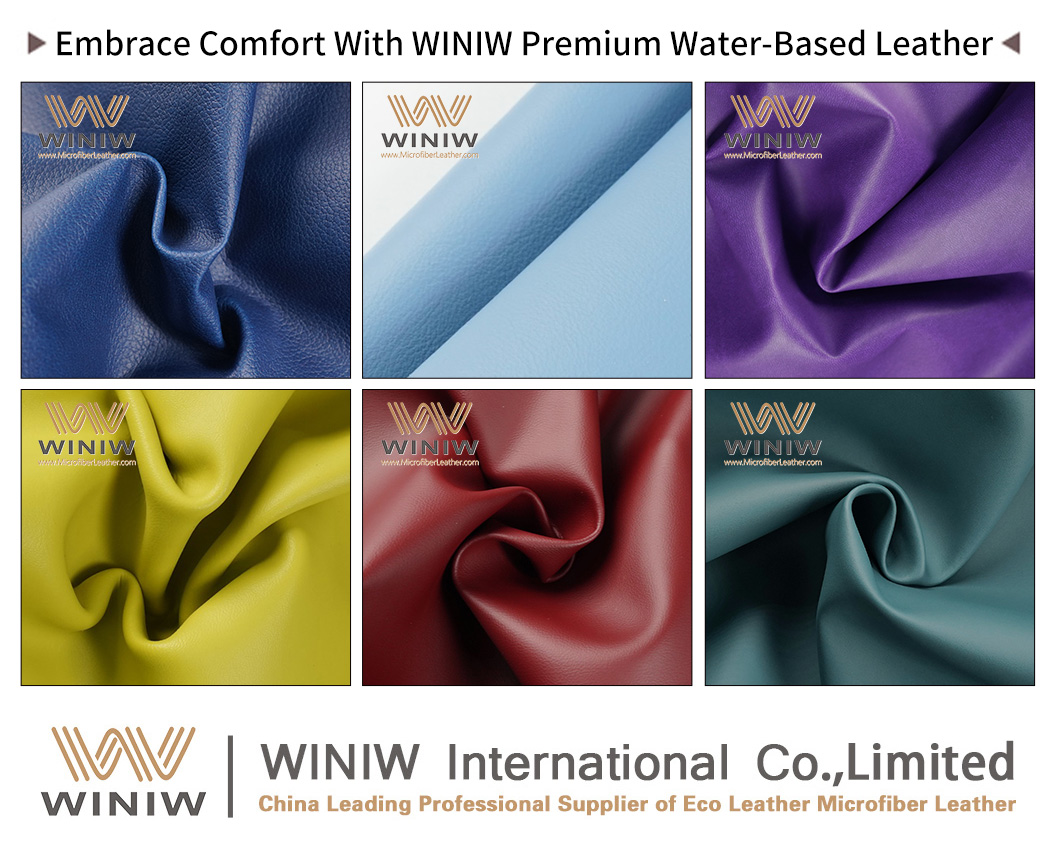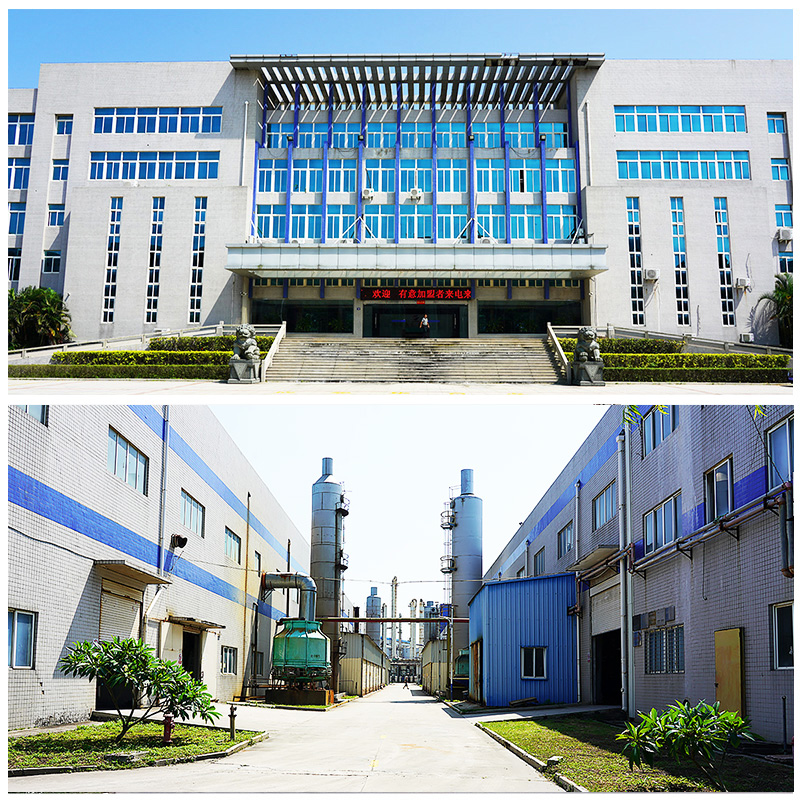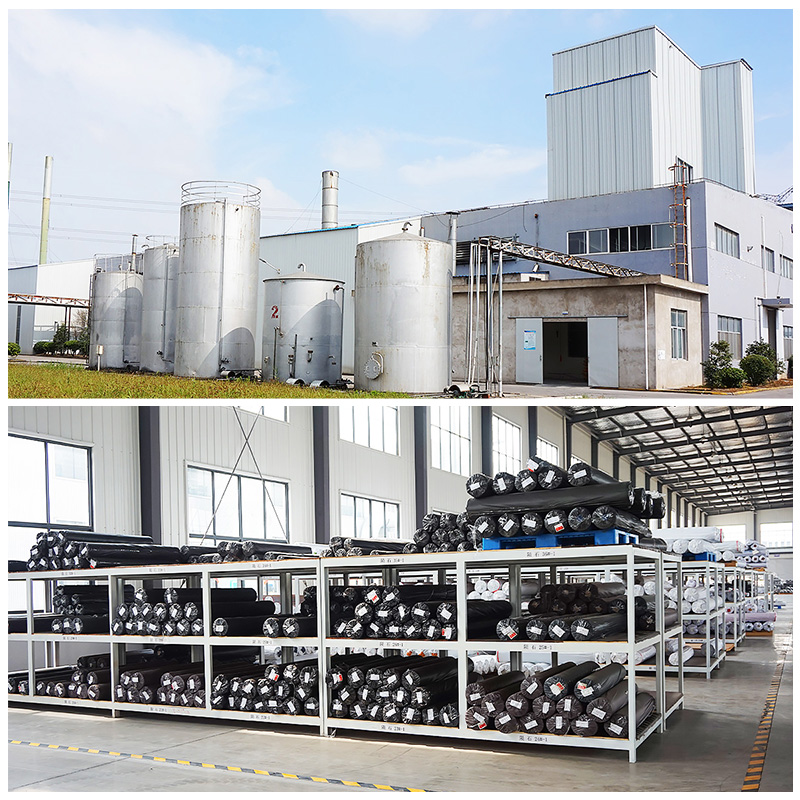Faux Leather and Real Leather Under the Environmental Microscope
Sep 01, 2025
Choosing materials with a lower environmental impact matters for anyone concerned about sustainability. Faux Leather often appears more sustainable since it does not harm animals and uses fewer resources during manufacturing. However, its synthetic nature leads to environmental harm after disposal, with products frequently ending up in landfills and releasing toxic chemicals. Real leather production generates high emissions, especially during farming and slaughtering stages, but it offers better options for recycling and biodegradability. Understanding these differences allows consumers to make informed decisions about their purchases.
Key Takeaways
Faux leather is made from synthetic materials like PVC and PU, which are not biodegradable and contribute to long-term pollution.
Real leather, while resource-intensive, can biodegrade in 10 to 50 years, making it a more sustainable option in the long run.
Consider the entire lifecycle of leather products, including production, use, and disposal, to make informed purchasing decisions.
Look for certifications that indicate sustainable sourcing and ethical production practices when buying leather or faux leather.
Plant-based leather alternatives are emerging as eco-friendly options, utilizing agricultural byproducts and reducing reliance on animal products.
Real leather often lasts longer than faux leather, reducing the need for frequent replacements and minimizing waste.
Ask critical questions about materials, sourcing, and processing methods to ensure your leather choices align with your sustainability values.
Both faux and real leather have environmental impacts; understanding these can help consumers choose products that support a sustainable future.
Environmental Impact Overview
Key Comparison
When comparing faux leather and real leather, the environmental impact depends on several factors throughout each material’s lifecycle. Production, use, and disposal all play a role in determining which option is more eco-friendly. Real leather often comes from animal hides, requiring significant resources for animal farming and processing. Faux leather, on the other hand, uses synthetic materials derived from plastics such as PVC and PU.
Table: Environmental Concerns by Material
Material
Environmental Concerns
Faux Leather
Made from plastic-based materials like PVC and PU, which have negative environmental impacts.
Real Leather
Associated with sustainability issues, but can be more biodegradable compared to synthetic alternatives.
Faux leather is not eco-sustainable due to its plastic composition. It is less breathable and generally less comfortable than real leather. Real leather, while more biodegradable, still presents sustainability challenges because of the resources needed for animal agriculture and the chemicals used in tanning.
A lifecycle assessment highlights key differences:
Environmental Aspect
Traditional Leather
Vegan Leather
Water Usage
Water-intensive due to the tanning process.
Often requires less water, depending on the material.
Land Use
Contributes to deforestation and land degradation due to animal farming.
Typically has a lower impact, especially when made from agricultural by-products or recycled materials.
Chemical Pollution
Involves toxic chemicals in the tanning process, posing environmental and health risks.
Some use chemicals in processing, but there is a trend towards more natural and less harmful substances.
Lower Environmental Impact Factors
Several factors influence which material has a lower environmental impact:
Material CompositionFaux leather is produced from petroleum-based plastics, which are not eco-sustainable. These plastics do not break down easily and can persist in the environment for centuries. Real leather, while requiring more resources to produce, can biodegrade faster under the right conditions.
BiodegradabilityReal leather can decompose in 10 to 50 years, depending on the tanning process and environmental conditions. Faux leather, made from plastics, may take up to 500 years to break down. During decomposition, faux leather can release microplastics, which pollute soil and water.
Microbial cellulose and lecithin-tanned bio-leathers show promising results, with studies reporting an average mass loss of over 74% after just 60 days in soil. This suggests that certain types of real leather can offer better environmental outcomes at the end of their lifecycle.
Carbon FootprintThe carbon footprint of each material varies:
Material
Carbon Footprint (kg CO₂e per m²)
Genuine Leather
~5
PU Leather
~8
PVC Leather
~7
Genuine leather has a lower carbon footprint per square meter compared to most faux leather alternatives. However, the environmental cost of animal farming and chemical tanning must also be considered.
Pollution and WasteFaux leather production relies on chemicals and plastics, which can leach into the environment during manufacturing and disposal. Microplastics from faux leather contribute to long-term pollution. Real leather production uses toxic chemicals in tanning, but sustainable practices and natural tanning methods can reduce this impact.
Note: Neither material is perfect. The environmental impact of both faux leather and real leather depends on sourcing, manufacturing methods, and disposal practices. Consumers should consider the entire lifecycle and look for certifications or eco-friendly alternatives when making a choice.
Faux Leather Environmental Impact
Production Process
Synthetic leather, commonly known as faux leather, relies on petroleum-based materials such as polyurethane (PU) and polyvinyl chloride (PVC). Manufacturers create these leather alternatives by coating fabric with plastic polymers. This process involves several steps, including mixing chemicals, applying coatings, and curing the material at high temperatures. The use of PU and PVC makes synthetic leather durable and flexible, but it also introduces significant environmental concerns.
The production of faux leather requires toxic chemicals. Polyurethane involves isocyanates and phthalates, which can cause air pollution and pose health risks. Polyvinyl chloride production releases dioxins and uses hazardous additives. These substances persist in the environment and contribute to the non-biodegradable nature of synthetic leather. The manufacturing process also consumes energy and water, increasing the overall footprint of these alternatives.
Pollution and Chemicals
Factories that produce faux leather release harmful pollutants into the air and water. The most common chemicals include phthalates, dioxins, and volatile organic compounds (VOCs). These substances can affect the health of factory workers and nearby communities. Dioxins, in particular, are highly toxic and can remain in the environment for years. The production of PU and PVC vegan leathers also pollutes water sources, making it difficult to achieve truly sustainable outcomes.
Note: The use of hazardous chemicals in synthetic leather production raises ethical concerns about worker safety and environmental justice.
A summary of key chemicals and their impacts:
Polyurethane (PU): Derived from petroleum, involves toxic chemicals like isocyanates and phthalates, leading to air pollution and non-biodegradability.
Polyvinyl Chloride (PVC): Involves dioxin release and hazardous additives like phthalates, contributing to health issues and persistent waste.
Microplastics and Waste
Synthetic leather products, including faux leather raincoats, handbags, and shoes, release microplastics during use and disposal. These tiny plastic particles enter soil and water, causing long-term environmental damage. When faux leather items reach the end of their life, they often end up in landfills. Unlike sustainable materials, PU and PVC alternatives show no degradation after 90 days, highlighting their non-biodegradable nature.
Plastic-based leather alternatives can take up to 500 years to decompose. Even after breaking down, they continue to release microplastics into the environment. This persistent waste accumulates in nature, harming wildlife and ecosystems. The impact of synthetic leather on plastic pollution remains a major challenge for sustainability efforts.
⚠️ The biggest issue with synthetic leather is its contribution to plastic pollution. When these products wear out, they usually end up in landfills, where they can take centuries to break down.
Carbon Footprint
Manufacturers measure the environmental impact of materials by calculating their carbon footprint. This metric represents the total greenhouse gas emissions produced during the lifecycle of a product, from raw material extraction to manufacturing, transportation, use, and disposal. Faux leather, made from synthetic polymers such as polyurethane (PU) and polyvinyl chloride (PVC), generates a significant carbon footprint due to its reliance on fossil fuels and energy-intensive production methods.
The process of creating faux leather begins with extracting petroleum, which serves as the base for PU and PVC. Refineries convert crude oil into polymers through chemical reactions that require high temperatures and specialized equipment. Factories then coat fabric with these polymers, using additional energy and releasing greenhouse gases. Transportation of raw materials and finished products further adds to the overall emissions.
When comparing faux leather to real leather, the carbon footprint per square meter provides a useful benchmark. The following table summarizes the average emissions associated with each material:
Type of Leather
Carbon Footprint (kg CO₂/m²)
Real Leather
17.0
Synthetic Leather
15.8
Synthetic leather, including faux leather, produces slightly lower carbon emissions per square meter than real leather. This difference results from the absence of livestock farming, which contributes methane and other greenhouse gases to the atmosphere. Animal agriculture also requires large amounts of feed, water, and land, increasing the overall environmental burden.
Despite the lower carbon footprint, faux leather presents other sustainability challenges. The production process relies on non-renewable resources and emits pollutants that persist in the environment. Factories often use coal or natural gas to power machinery, further increasing emissions. In addition, the disposal of faux leather products does not offset the initial carbon savings, as these items remain in landfills for centuries and release microplastics.
Consumers seeking to reduce their carbon footprint may view faux leather as a preferable alternative to real leather. However, the decision involves more than emissions alone. The long-term environmental consequences of synthetic materials, including waste accumulation and pollution, must factor into any sustainability assessment.
Tip: When evaluating the carbon footprint of leather alternatives, consider the entire lifecycle, including production, transportation, use, and disposal. Look for manufacturers that use renewable energy and recycled materials to further reduce emissions.
Real Leather Environmental Impact
Resource Use
Real leather production demands significant natural resources. The process begins with cattle farming, which requires large amounts of water and land. Farmers must provide water for both the animals and the crops that feed them. The tanning process, which transforms raw hides into usable material, also uses water and chemicals.
Producing a standard cow skin leather tote bag requires about 17,127.8 liters of water. This amount equals what a person should drink over 23 years.
To make 10 typical Brazilian leather bags, manufacturers clear about 1 hectare of land.
Creating 17 pairs of leather boots uses land equal to 1.5 football fields.
Genuine leather production often leads to land degradation and the use of toxic tanning chemicals.
Faux leather usually has a lower water footprint and needs less land. However, real leather remains popular for its durability and traditional appeal. The high resource use of real leather raises questions about its sustainability, especially as global demand increases.
Biodegradability
Biodegradability sets real leather apart from most synthetic alternatives. Under the right conditions, real leather breaks down much faster than plastic-based materials. The tanning method affects how quickly leather decomposes.
Type of Leather
Biodegradation Timeline
Chrome-tanned leather
50 years or more
Vegetable-tanned leather
10 to 25 years
Vegetable-tanned leather, often used in sustainable leather products, decomposes in as little as 10 years. Chrome-tanned leather, which is more common, can take 50 years or longer to break down. While these timelines are not immediate, they are much shorter than the centuries required for faux leather to decompose. Sustainable leather options that use natural tanning methods offer better outcomes for the environment.
Emissions
The environmental impact of real leather extends beyond resource use. Cattle farming produces large amounts of methane, a potent greenhouse gas. This process also contributes to deforestation and land use changes, which increase carbon emissions. The tanning process uses chemicals and water, generating waste and pollution.
Cattle farming releases methane, which has a strong warming effect on the atmosphere.
The tanning process is resource-intensive and creates chemical waste.
Decomposition of cow skin releases methane, and further processing can worsen environmental harm.
Sustainable leather practices aim to reduce these emissions. Some producers use ethical and sustainable ranching methods to limit deforestation and improve animal welfare. Sustainable leather also relies on natural tanning processes, which use fewer chemicals and create less pollution. These efforts help lower the overall impact of real leather on the environment and support long-term sustainability.
Sustainable Sourcing
Sustainable sourcing practices have become essential in reducing the environmental impact of real leather. Many producers now focus on responsible ranching and innovative tanning methods to address the industry’s most pressing challenges. These efforts help conserve resources, minimize pollution, and ensure ethical use of animal by-products.
Modern tanneries have adopted several strategies to make real leather production more sustainable:
Chrome-free or metal-free tanning methods use less harmful materials. These alternatives replace traditional chemicals with plant-based or synthetic agents that pose fewer risks to the environment and human health.
Closed-loop water systems have become standard in advanced facilities. These systems recycle water throughout the tanning process, drastically reducing both water consumption and chemical discharge.
Some tanneries now achieve over 90% water recovery rates. This high level of reuse limits the strain on local water supplies and prevents contaminated water from entering natural ecosystems.
Many tanneries have reported a 30-35% reduction in the use of tanning and post-tanning chemicals compared to conventional processes. Pollution levels have also dropped, with an 81% reduction in chromium content in wastewater and a 46% decrease in biological and chemical oxygen demand (BOD and COD) pollution loads.
Sustainable sourcing also means making the most of existing resources. Every hide used for real leather comes from animals raised primarily for food. By collecting hides that would otherwise be discarded, processors reduce waste and lower the overall environmental impact of animal agriculture. This approach ensures that the entire animal serves a purpose, supporting a more circular economy.
The following table highlights the benefits of sustainable sourcing in real leather production:
Benefit
Description
Reduction in Chemicals
30-35% fewer tanning and post-tanning chemicals used
Pollution Reduction
81% less chromium in effluent, 46% lower BOD and COD pollution loads
Improved Durability
Enzymatic tanning produces leather with superior tensile strength
Sustainable ranching practices further support environmental goals. Farmers use rotational grazing and land management techniques to maintain healthy pastures and reduce deforestation. These methods help preserve biodiversity and limit greenhouse gas emissions from livestock.
Sustainable sourcing in real leather production demonstrates that the industry can evolve. By combining responsible animal agriculture, advanced water management, and safer tanning methods, producers can create high-quality leather with a lower environmental footprint. Consumers who seek out products certified by reputable organizations support these positive changes and encourage further innovation in the sector.
Sustainability and Ethics
Animal Welfare
Animal welfare remains a central concern in the debate between real leather and faux leather. Real leather production involves animal farming, transportation, and slaughter. These stages present challenges for animal welfare, with conditions varying widely across regions due to differences in climate, economic development, and cultural practices. On-farm conditions, transport, and slaughter practices all influence the well-being of animals. Some regions enforce strict animal welfare standards, while others lack oversight, leading to inconsistent practices.
Faux leather offers a clear advantage from an ethical standpoint. It does not use animal products, making it a cruelty-free option. Many vegans and animal rights advocates prefer faux leather for this reason. The absence of animal hides in its production eliminates concerns about animal suffering.
Aspect
Faux Leather
Real Leather
Animal Welfare
Cruelty-free, no animal products
Involves animal hides, raises ethical concerns
Faux leather is favored by vegans and animal rights advocates.
It does not involve the use of animal products.
Consumers who prioritize animal welfare often choose faux leather as the more ethical and sustainable alternative.
Worker Safety
Worker safety issues affect both the real leather and faux leather industries. Tanneries that process real leather expose workers to hazardous chemicals. These chemicals can cause skin disorders, respiratory problems, and other health risks. Many tanneries operate in countries with limited regulations, increasing the risk of unsafe working conditions.
Faux leather factories also present significant hazards. The production of synthetic leather relies on chemicals such as phthalates and dioxins. These substances can harm workers’ health, especially in poorly regulated factories. Some factories, particularly in countries with less oversight, exploit workers and fail to provide adequate protection.
Hazard Type
Source of Hazard
Chemical exposure
Noxious chemicals in faux leather production
Unsafe working conditions
Exploitation of workers in factories in China
Exposure to hazardous chemicals at tanneries
Unsafe working conditions in faux leather factories
The faux leather industry, especially those using petroleum-based plastics, releases toxins that pose health risks to workers. Both industries must address these issues to improve sustainability and ensure ethical treatment of workers.
Certifications
Certifications help consumers identify sustainable and ethical leather products. Several organizations assess environmental compliance, social accountability, and product safety in the leather industry.
Certification Name
Description
Leather Working Group
Assesses environmental compliance and promotes sustainable practices in leather manufacturing.
ICEC - Institute of Quality Certification for the Leather Sector
Defines principles of conduct and social accountability for leather manufacturers.
Brazilian Leather Certification of Sustainability
Evaluates tanning industry results based on economic, environmental, and social criteria.
LEATHER STANDARD by OEKO-TEX®
Ensures high human-ecological product safety across all production levels.
Sustainable Leather Foundation
Provides transparency in sustainability performance across the leather value chain.
Tip: Look for these certifications when purchasing leather or faux leather products. Certified products support sustainable practices and higher ethical standards.
Certifications play a vital role in promoting transparency and accountability. They encourage manufacturers to adopt sustainable methods and provide consumers with confidence in their choices.
Plant-Based Alternatives
Plant-based leather alternatives have emerged as a promising solution for those seeking sustainable and ethical options. These materials offer a way to reduce reliance on animal products and synthetic plastics. Manufacturers now use innovative processes to create alternatives that mimic the look and feel of traditional leather.
Many companies have developed materials from agricultural byproducts and renewable resources. These alternatives often require less water and fewer chemicals than conventional leather. They also support local farming communities by utilizing waste that would otherwise be discarded.
🌱 Plant-based leather alternatives help reduce environmental impact and support ethical production.
Popular Plant-Based Leather Alternatives:
Bio-Tex: Produced through fermentation, this bio-based material significantly lowers greenhouse gas emissions.
Desserto (Cactus Leather): Made from the Opuntia cactus, it is water-efficient, chemical-free, and biodegradable.
Piñatex (Pineapple Leather): Created from pineapple leaf fibers, it offers a unique texture and supports local agriculture.
Apple Leather: Derived from apple waste, it transforms discarded fruit parts into a soft, flexible material.
Banana Leather: Utilizes banana plant stems, providing a strong and flexible alternative.
Mango Leather: Made from mango seeds, it reduces waste and features a distinctive aesthetic.
Mushroom Leather: Produced from mycelium, it is biodegradable and customizable for different uses.
Mirum: A plastic-free alternative made from natural materials and agricultural byproducts.
The following table summarizes key features of these alternatives:
Material
Source
Key Benefits
Bio-Tex
Fermentation process
Low emissions, bio-based
Desserto
Cactus
Water-efficient, chemical-free
Piñatex
Pineapple leaves
Supports farming, eco-friendly
Apple Leather
Apple waste
Reduces food waste
Banana Leather
Banana stems
Strong, flexible
Mango Leather
Mango seeds
Unique look, waste reduction
Mushroom Leather
Mycelium
Biodegradable, versatile
Mirum
Natural byproducts
Plastic-free, sustainable
These leather alternatives not only address environmental concerns but also provide ethical choices for consumers. Cactus leather stands out for its minimal water usage and lack of harmful chemicals. Pineapple leather uses agricultural byproducts, which helps local farmers and reduces waste. Mushroom leather and Mirum offer biodegradable and plastic-free options, making them attractive for eco-conscious buyers.
Consumers who seek sustainable fashion can choose from a growing range of plant-based alternatives. These materials continue to evolve, offering durability, style, and environmental benefits. As technology advances, more brands will likely adopt these innovative solutions, making ethical and sustainable choices accessible to everyone.
Product Lifespan and Disposal
Durability
Durability plays a crucial role in determining the sustainability of leather products. Real leather stands out for its longevity. Many consumers report that genuine leather items last 10 to 20 years or longer with minimal maintenance. Manufacturers often use upcycled by-products to create real leather, which adds to its value and resilience. Faux leather, made from synthetic materials, offers flexibility and weather resistance. With proper care, faux leather can last up to 20 years. However, it may show signs of wear and tear sooner than real leather, especially in high-use items like shoes or bags.
Material
Durability Characteristics
Lifespan
Real Leather
Lasts 10 to 20 years or longer, requires minimal maintenance, made from upcycled by-products
10-20+ years
Faux Leather
More durable, flexible, weather-resistant, can last up to 20 years with proper care
Up to 20 years
Note: Real leather often develops a patina over time, which many users find attractive. Faux leather maintains its original appearance but may crack or peel as it ages.
End-of-Life Options
Disposal methods for leather products influence their environmental footprint. Real leather offers several sustainable end-of-life options. Manufacturers can repurpose genuine leather offcuts for smaller goods or accessories. Upcycling discarded leather items into new products promotes sustainability and reduces waste. Bonded leather and reconstituted leather use scraps and fibers, combining them with binders to create upholstery or molded items.
Type of Leather
Description
Bonded Leather
Made by bonding leather scraps and fibers with a polyurethane binder, used in upholstery.
Reconstituted Leather
Created by grinding leather scraps into powder and combining with a binding agent for molding.
Upcycled Leather
Involves repurposing discarded leather items to create new products, promoting sustainability.
Genuine Leather Offcuts
Leftover pieces from manufacturing that can be repurposed for smaller products or other uses.
Faux leather presents more challenges at the end of its life. Most synthetic leather products cannot be recycled easily due to their plastic content. These items typically end up in landfills, where they persist for centuries. Some manufacturers experiment with recycling programs, but the process remains complex and costly.
Waste Accumulation
Waste accumulation represents a significant concern for both real and faux leather. Real leather biodegrades faster, breaking down in 10 to 50 years depending on the tanning process. This timeline is much shorter than the 500 years required for faux leather to decompose. As faux leather degrades, it releases microplastics into the environment, contributing to long-term pollution. Landfills fill up with discarded synthetic leather goods, increasing the overall impact on ecosystems.
⚠️ Choosing products with longer lifespans and sustainable disposal options helps reduce waste and environmental harm.
Consumers who prioritize durability and responsible disposal can minimize waste accumulation. Selecting real leather with sustainable sourcing or exploring plant-based alternatives supports a circular economy and lessens the burden on landfills.
Common Misconceptions
Vegan vs. Eco-Friendly
Many consumers believe that vegan leather always offers a more sustainable choice than real leather. This assumption often stems from the idea that avoiding animal products automatically reduces environmental harm. However, the reality is more complex. The environmental impact of vegan leather depends on its materials, production process, and lifespan.
The carbon footprint of real leather production is sometimes overstated. When considering the entire lifecycle, real leather can have an environmental impact comparable to or even lower than vegan leather.
Vegan leather often lacks durability. Products made from synthetic alternatives may wear out faster, leading to more frequent replacements and increased waste.
The sustainability of any leather alternative depends on how it is made. Some vegan leathers use petroleum-based plastics, which persist in the environment for centuries.
Note: Choosing between vegan and real leather requires looking beyond labels. Consumers should consider durability, production methods, and end-of-life options to make a truly eco-friendly decision.
Greenwashing
Greenwashing remains a widespread issue in the leather and faux leather industries. Brands frequently use marketing tactics that exaggerate or misrepresent the environmental benefits of their products. These tactics can mislead well-intentioned consumers who want to make responsible choices.
Common greenwashing strategies include:
Vagueness: Companies use terms like "eco-friendly" or "green" without providing evidence or details.
Irrelevant Claims: Brands highlight minor environmental initiatives while ignoring larger, more harmful impacts.
Fibbing: Some companies make outright false claims about their products' environmental benefits.
Lesser of Two Evils: Marketers emphasize a product’s small advantage while overlooking its overall negative impact.
False Labels: Products may display misleading certifications that suggest higher sustainability than actually achieved.
Hidden Trade-offs: Brands promote a single green attribute, such as recycled content, without addressing other environmental harms.
Brands often label products as "sustainable" or "eco-friendly" with little proof. This practice leads consumers to believe they are making better choices, even when the full environmental impact remains unclear.
Marketing Claims
Consumers face a challenging landscape when evaluating environmental marketing claims about leather alternatives. Many brands use buzzwords and vague promises, making it difficult to separate fact from fiction. To avoid falling for misleading claims, consumers can follow a few practical steps:
Watch Out for Vague Labels: Products labeled as "sustainable" or "eco-friendly" should provide clear explanations and supporting information.
Verify Certifications: Look for recognized, third-party certifications that confirm environmental claims.
Assess Brand Transparency: Trust brands that openly share details about their supply chain, sourcing, and production practices.
Consumers deserve genuinely holistic, end-to-end environmental assessments that account for a product’s full lifecycle—including disposal and biodegradability. Anything less falls short of true sustainability.
By staying alert to these common misconceptions and marketing tactics, consumers can make more informed, responsible choices when selecting leather or its alternatives.
Making Sustainable Choices
Practical Tips
Consumers can make more sustainable decisions by considering several practical factors before purchasing leather or leather alternatives. The following tips help guide responsible choices:
Choose real leather for products that require durability and longevity. Real leather often lasts for decades, making it a sustainable investment for items like shoes, belts, or bags.
Select faux leather for easy maintenance. Synthetic options resist stains and require less care, which suits busy lifestyles.
Opt for faux leather when seeking ethical or vegan options. These alternatives avoid animal products and appeal to those with specific ethical concerns.
Pick real leather for its unique aesthetic. Over time, real leather develops a patina, giving each item a distinct character.
Consider faux leather for budget-friendly purchases. Synthetic alternatives usually cost less, making them accessible for a wider range of consumers.
Tip: Always check for certifications that verify sustainable sourcing and production practices. Labels from reputable organizations help ensure that products meet environmental and ethical standards.
When to Choose Real Leather
Real leather stands out as a sustainable choice in specific situations. Many manufacturers use animal hides as a byproduct of the meat industry, which helps minimize waste. Real leather is biodegradable, so it contributes less to long-term landfill accumulation compared to synthetic alternatives. Its durability means that consumers replace these items less frequently, reducing overall consumption and waste.
Real leather serves as a renewable raw material. Animal hides provide an abundant supply for various industries, supporting sustainability.
The environmental impact of one real leather item is often lower than repeatedly replacing faux leather products.
Real leather works best for high-use items that require strength and longevity, such as work boots, wallets, or furniture.
Note: When selecting real leather, look for products made with vegetable tanning or other eco-friendly processes to further reduce environmental impact.
When to Choose Faux Leather
Faux leather offers a sustainable alternative in scenarios where animal welfare or cost takes priority. This material does not use animal products, making it suitable for vegans and those who avoid animal-derived goods. Faux leather also provides a low-maintenance solution for people who want easy cleaning and care.
Faux leather works well for fashion items that follow trends and may not need to last for decades.
This alternative suits consumers who want to avoid supporting animal agriculture.
Faux leather provides an affordable entry point for those seeking the look of leather without the higher price tag.
Consumers should seek faux leather products made from recycled or plant-based materials to further support sustainability goals.
Questions to Ask
Selecting a sustainable leather or faux leather product requires more than reading a label. Informed consumers ask targeted questions to uncover the true environmental and ethical impact of their choices. The following questions guide buyers toward more responsible decisions.
1. What materials make up this product?Buyers should identify whether the item uses animal hides, petroleum-based plastics, or plant-based alternatives. Materials determine the product’s biodegradability, carbon footprint, and potential for pollution.
2. How was the material sourced?Responsible sourcing reduces environmental harm. Consumers should ask if the leather comes from by-products of the meat industry or if the faux leather uses recycled or renewable resources.
3. Which tanning or processing methods were used?Tanning methods affect both worker safety and environmental impact. Vegetable tanning and chrome-free processes use fewer toxic chemicals. For faux leather, inquire about the use of phthalates, dioxins, or other hazardous substances.
4. Does the product carry credible certifications?Certifications from organizations such as the Leather Working Group or OEKO-TEX® indicate adherence to environmental and ethical standards. Products without third-party verification may not meet sustainability claims.
5. What is the expected lifespan of the product?Durability influences sustainability. Longer-lasting items reduce waste and resource consumption. Buyers should ask about the product’s warranty, repair options, and care requirements.
6. How should the product be disposed of at the end of its life?End-of-life options matter. Consumers should seek information about recyclability, compostability, or take-back programs. Products that biodegrade or can be upcycled offer better environmental outcomes.
7. What is the company’s transparency regarding supply chain and labor practices?Ethical brands disclose their sourcing, manufacturing, and labor conditions. Transparency signals a commitment to both environmental and social responsibility.
Tip: Shoppers who ask these questions demonstrate environmental awareness and encourage brands to improve their practices.
The table below summarizes key questions and their significance:
Question
Why It Matters
What materials are used?
Impacts biodegradability and pollution
How was it sourced?
Affects resource use and ethical standards
Which processing methods were used?
Determines chemical use and worker safety
Does it have certifications?
Verifies sustainability claims
What is the expected lifespan?
Influences waste and resource efficiency
How is it disposed of?
Reduces landfill and environmental harm
Is the supply chain transparent?
Ensures ethical and responsible production
By asking these questions, consumers can make choices that align with their values and support a more sustainable future. Responsible purchasing begins with curiosity and a willingness to seek out credible information.
Real leather usually has a lower environmental impact due to its biodegradability and longer lifespan, but exceptions exist when considering animal welfare and resource use. Readers can make informed choices by checking certifications, asking about sourcing, and comparing product lifespans. Ongoing research and skepticism toward marketing claims help avoid greenwashing.
Tip: Consider both environmental and ethical factors before making a purchase. Responsible decisions support a more sustainable future.
FAQ
What is the main environmental concern with faux leather?
Faux leather contains petroleum-based plastics. These plastics do not biodegrade quickly. They release microplastics into soil and water, which harm ecosystems and wildlife.
Does real leather always have a lower carbon footprint than faux leather?
Real leather often has a lower carbon footprint per square meter. However, cattle farming and tanning processes increase emissions. Faux leather avoids livestock emissions but relies on fossil fuels.
Can consumers recycle faux leather products?
Most recycling centers do not accept faux leather. The plastic content complicates recycling. Some brands offer take-back programs, but options remain limited.
Are plant-based leather alternatives more sustainable?
Plant-based leathers use renewable resources and reduce waste. They often require less water and fewer chemicals. These materials provide a promising solution for eco-conscious consumers.
How can buyers verify the sustainability of leather products?
Buyers should check for certifications such as Leather Working Group or OEKO-TEX®. These labels indicate responsible sourcing and safer production methods.
Does vegan leather mean cruelty-free and eco-friendly?
Vegan leather avoids animal products, making it cruelty-free. Many vegan leathers use plastics, which may harm the environment. Consumers should research materials and production methods.
What is the best way to dispose of real leather items?
Real leather biodegrades over time. Upcycling or donating extends its lifespan. Composting is possible for vegetable-tanned leather, but chrome-tanned leather should go to landfill.

